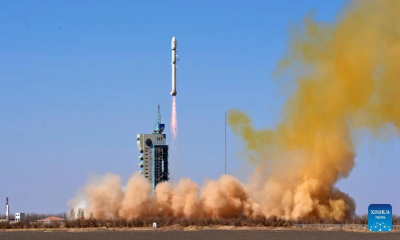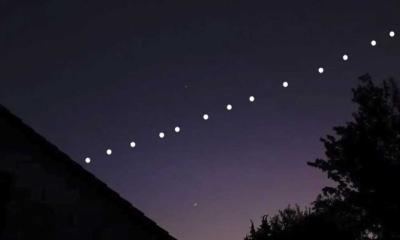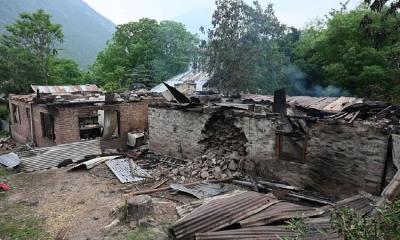A mega-tsunami on Mars could have been triggered by an asteroid strike similar to the devastating blow that wiped out the dinosaurs 66 million years ago.
The giant wave, measuring up to 250 metres in height, was created about 3.4 billion years ago by the impact of an asteroid or comet in a shallow ocean in the northern lowlands of the red planet, scientists believe.
Until now, the location of the crater left by the asteroid was unclear.
Researchers at the Planetary Science Institute in Tucson, Arizona, analysed maps of Mars' surface, created from photographs of previous missions to the planet.
They identified a crater - named Pohl - measuring 110km in diameter, which they believe was caused by the asteroid.
It is located in an area that previous studies indicated was submerged by ocean water around 120 metres below sea level.
Scientists believe it was formed 3.4 billion years ago based on its position above and below rocks previously dated to this time period.
They carried out simulations of asteroid and comet collisions to establish what kind of impact could have created Pohl and whether it could have caused a mega-tsunami.
A simulation that formed a crater with similar dimensions to Pohl was triggered by a 9km asteroid encountering strong ground resistance, releasing 13 million megatons of TNT energy.
Another 3km asteroid, encountering weak ground resistance, released 0.5 megatons of TNT energy.
One megaton of TNT energy has the equivalent force of one million tons.
The amount of energy released by the most powerful megaton ever tested was approximately 57 megatons of TNT energy.
In both simulations, craters measuring 110km in diameter generated mega-tsunamis reaching as far as 1,500km from the centre of the impact site.
Analysis of the giant wave unleashed by the 3km asteroid impact suggested the tsunami could have measured 250 metres on land.
The impact of Pohl has been likened to that of the Chicuxlub crater buried under the Yucatan Peninsula in Mexico, after which the dinosaurs became extinct.
Writing in the Scientific Reports journal, the researchers said of their breakthrough: "The site's location along a highland-facing lobe aligned to erosional grooves supports a mega-tsunami origin."
They added: "Our findings allow that rocks and soil salts at the landing site are of marine origin, inviting the scientific reconsideration of information gathered from the first in-situ measurements on Mars."







































